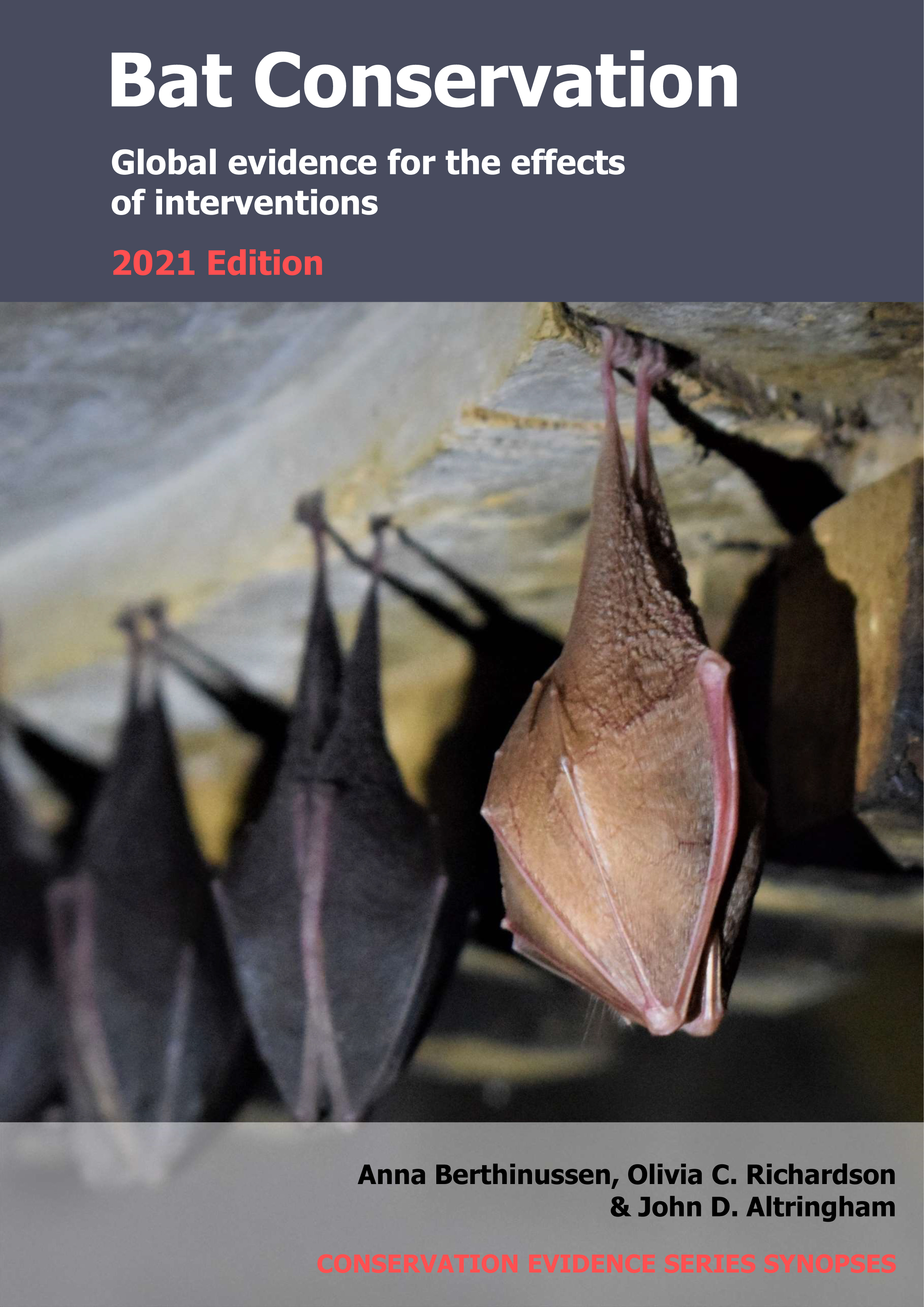Retain riparian buffers on agricultural land
-
Overall effectiveness category Unknown effectiveness (limited evidence)
-
Number of studies: 1
View assessment score
Hide assessment score
How is the evidence assessed?
-
Effectiveness
40% -
Certainty
20% -
Harms
0%
Study locations
Supporting evidence from individual studies
A replicated, paired sites study in 2008 on 17 pairs of farms in Scotland, UK (Fuentes-Montemayor et al 2011) found that buffer strips along waterways on agri-environment scheme farms had similar activity of Pipistrellus species as the edges of waterways on conventional farms. The activity of common pipistrelles Pipistrellus pipistrellus and soprano pipistrelles Pipistrellus pygmaeus was similar along waterways with buffer strips and conventionally managed waterways (data reported as statistical model results). On agri-environment scheme farms, waterways had buffers with tall, waterside vegetation and restrictions on fertiliser, pesticides, mowing and grazing. Each of 17 waterways with buffers on agri-environment scheme farms was paired with 17 waterways on conventional farms with similar farming activities and surrounding habitats. No details were reported about waterway edges on conventional farms. Each of 13 pairs of farms was sampled once on the same night in June–September 2008. On each of 26 farms, bat activity was recorded continuously from 45 minutes after sunset using bat detectors along transects 2.5–3.7 km in length.
Study and other actions tested
Where has this evidence come from?
List of journals searched by synopsis
All the journals searched for all synopses
This Action forms part of the Action Synopsis:
Bat Conservation
Bat Conservation - Published 2021
Update 2020





)_2023.JPG)














